A cylinder with a diameter of 0.240 m is placed between the plates of a hydraulic press as illustrated in the figure. A force equal to N is applied to the cylinder. What is the pressure on the end of the cylinder due to the applied force ?
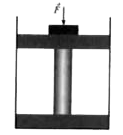
Pa
Pa
Pa
Pa
The correct Answer is:A
Step by step video & image solution for A cylinder with a diameter of 0.240 m is placed between the plates of a hydraulic press as illustrated in the figure. A force equal to 4.45xx10^(5) N is applied to the cylinder. What is the pressure on the end of the cylinder due to the applied force ? by Physics experts to help you in doubts & scoring excellent marks in Class 12 exams.
Topper's Solved these Questions
- BOOK - RESNICK AND HALLIDAYCHAPTER - ELASTICITYEXERCISE - PRACTICE QUESTIONS (More than One Correct Choice Type)8videos
ELASTICITY
- BOOK - RESNICK AND HALLIDAYCHAPTER - ELASTICITYEXERCISE - PRACTICE QUESTIONS (Linked Comprehension)6videos
ELASTICITY
- BOOK - RESNICK AND HALLIDAYCHAPTER - ELASTICITYEXERCISE - CHECKPOINT1videos
ELASTICITY
- BOOK - RESNICK AND HALLIDAYCHAPTER - CURRENT AND RESISTANCEEXERCISE - Practice Questions (Integer Type)3videos
CURRENT AND RESISTANCE
- BOOK - RESNICK AND HALLIDAYCHAPTER - ELECTRIC CHARGES AND FIELDSEXERCISE - Practice Questions (Integer Type )3videos
ELECTRIC CHARGES AND FIELDS
Similar Questions
While leunching a rocket a rocket of mass 2×102kg , a force of 5×105 . N is applied for 10 seconds . What is the velocity attained by the rocket at the end of 10s ?
View SolutionA gas filled in a cylinder fitted with a movable piston is compressed. What is the nature of work done by the applied force?
View Solution
Knowledge Check
- Question 1 - Select One or More
A clockwise torque of 6N−m is applied to the circular cylinder as shown in the figure. There is no friction between the cylinder and the block.
 AThe cylinder will be slipping but the system does not move forwardBThe system cannot move forward for any torque applied to the cylinderCThe acceleration of the system will be 1m/s2 forwardDThe angular acceleration of the cylinder is 10rads−2
AThe cylinder will be slipping but the system does not move forwardBThe system cannot move forward for any torque applied to the cylinderCThe acceleration of the system will be 1m/s2 forwardDThe angular acceleration of the cylinder is 10rads−2 - Question 2 - Select One
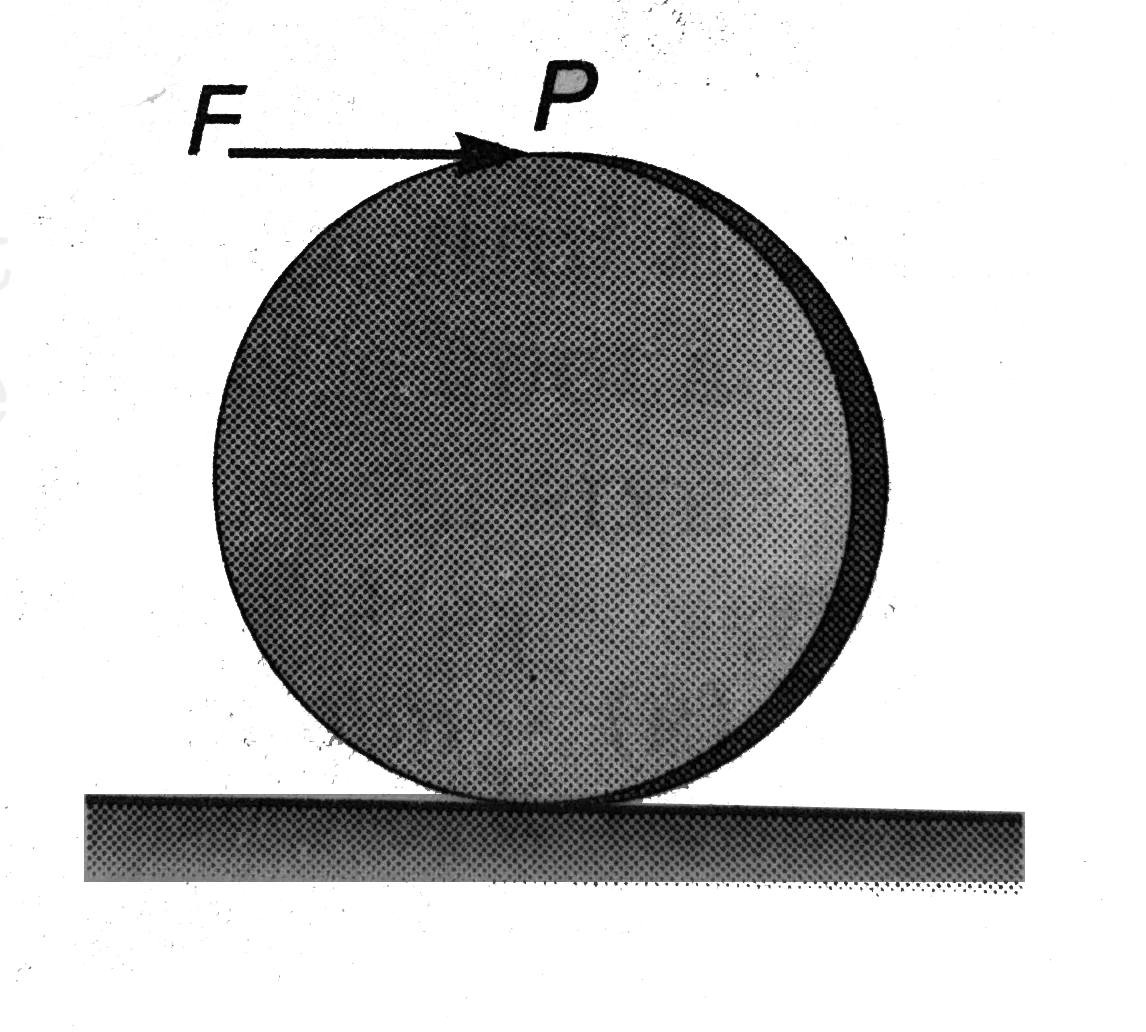
A uniform solid cylinder of mass m and radius R is placed on a rough horizontal surface. A horizontal constant force F is applied at the top point P of the cylinder so that it start pure rolling. The acceleration of the cylinder isAF/3mB2F/3mC4F/3mD5F/3m - Question 3 - Select One
While launching a rocket of mass 2×104 kg, a force of 5×105N is applied for 20s. What is the velocity attained by the rocket at the end of 20s?
A300m/sB350 m/sC450 m/sD500 m/s
Consider a cylinder of mass M and radius R lying on a rough horizontal plane. It has a plank lying on its top as shown in the figure. A force F is applied on the plank such that the plank moves and causes the cylinder to roll. The plank always remains horizontal. There is no slipping at any point to contact.
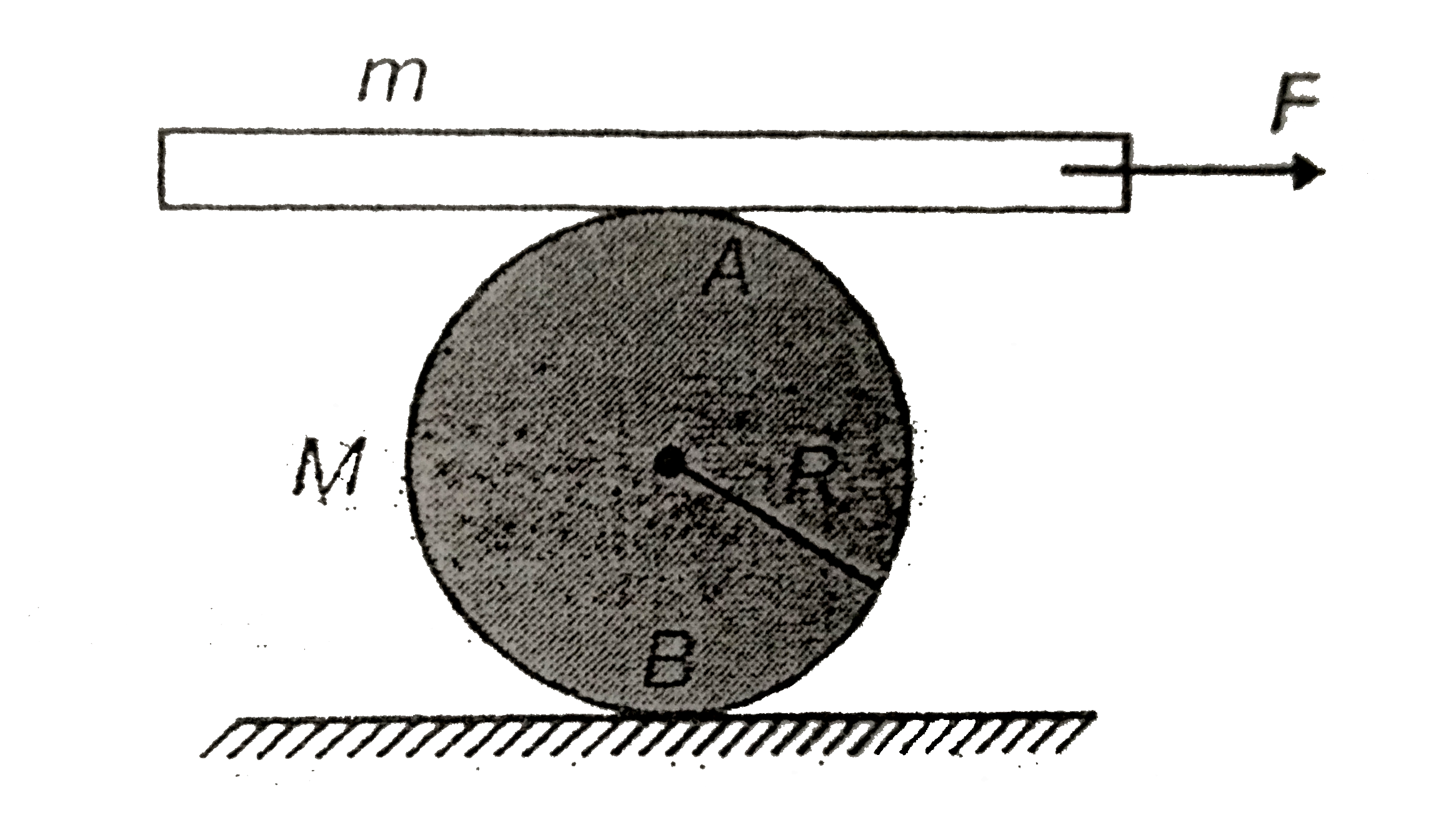
(a) what are the directions of the fricition forces acting at A and B on the plank and the cylinder ?
(b) Calculate the acceleration of the cylinder.
(c) Find the value of frictional force at A & B.View SolutionA cylinder of 4 m height is half filled with oil of density 0.72 g cm−3. If the Becond half of cylinder is filled with water, then find the pressure at the bottom of cylinder due to these liquids.
View SolutionIn a simple hydraulic press, the cross sectional area of the two cylinders is 5×10−1m2 and 10−2m2 respectively. A force of 20N is applied at the small plunger.
a. What is the pressure produced in the cylinders?
b. What is the thrust exerted on the large plunger?
c. How much work is done by the operator, if the smaller plunger moves down 0.1m?
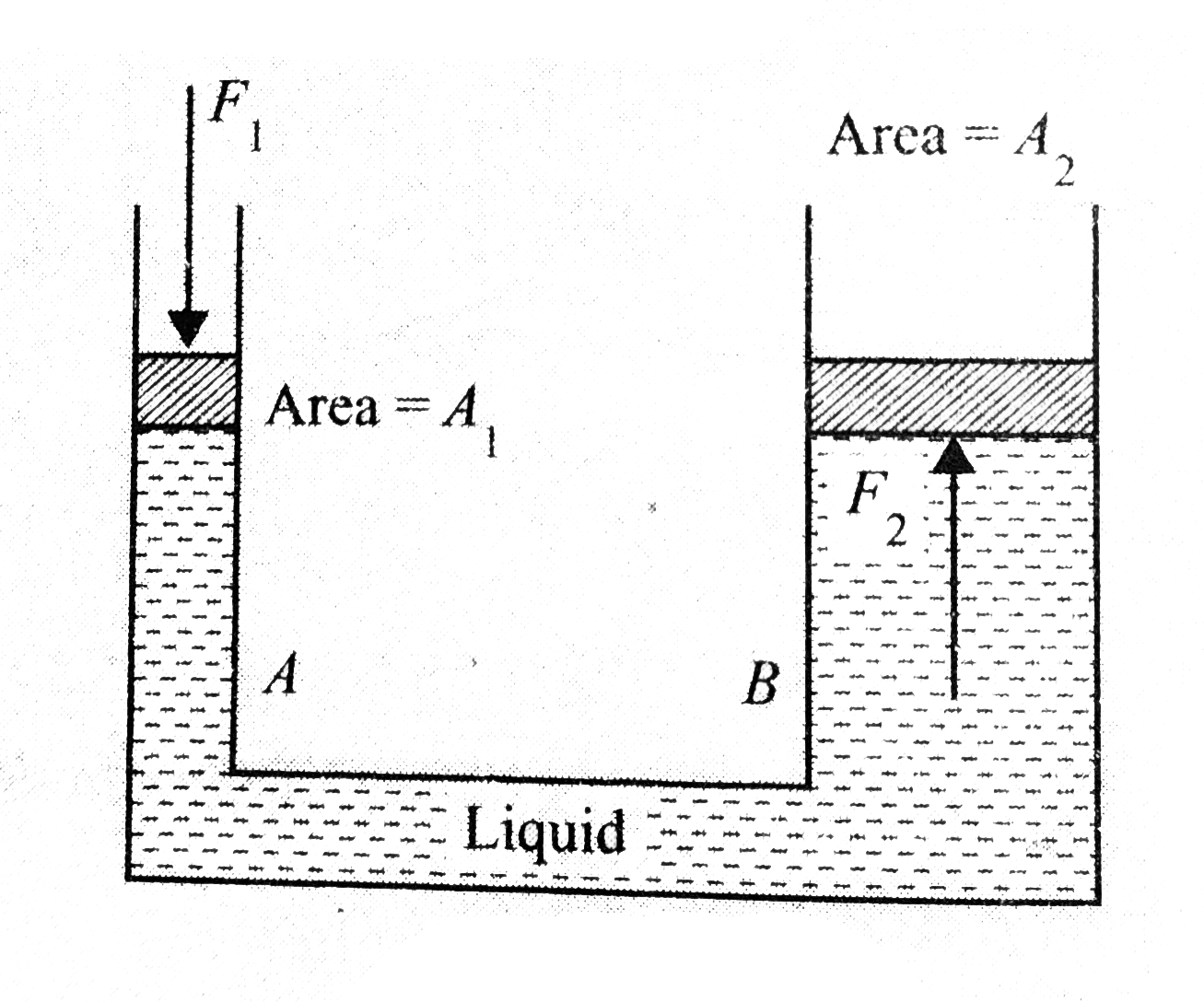 View Solution
View SolutionA uniform cylinder of radius R originally had weight of 80N. It weigths 65N, after an off axis cylinderical hoole at 2R3 was drilled through n.
The axis of the two cylinders are parallel and at same height A force T is applied to the top of the cylinder horizontally to keep the cylinder at rest about the axis of the original cylinder passing through O. The value of force should be
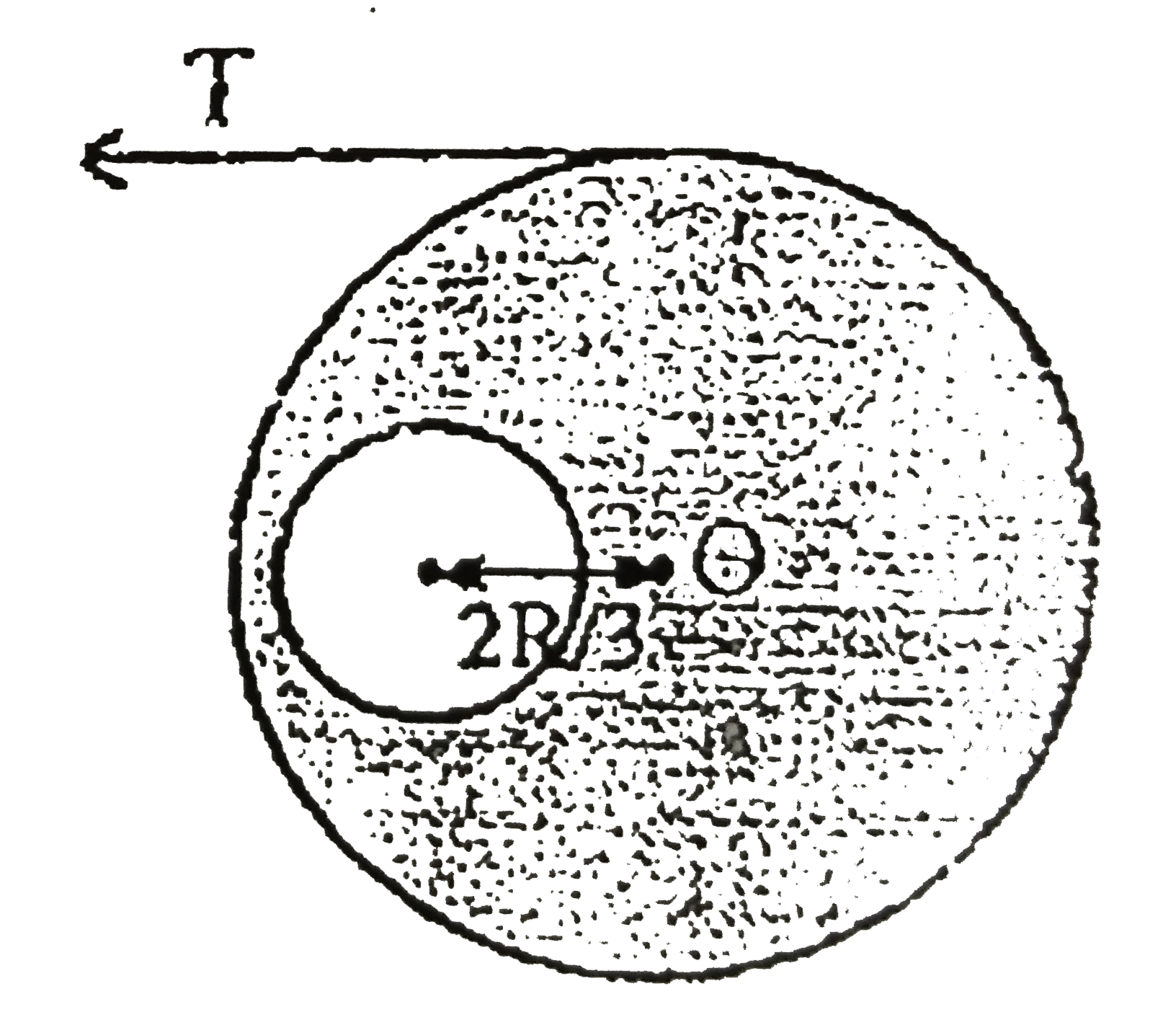 View Solution
View SolutionA horizontal uniform rod of mass 'm' has its left end hinged to the fixed incline plane, while its right end rrests on the top of a uniform cylinder of mass 'm' which in turn is at rest on the fixed inclined plane as shown. The coefficient of friction between the cylinder and rod, and between the cylinder and inclined plane, is sufficient to keep the cylinder at rest.
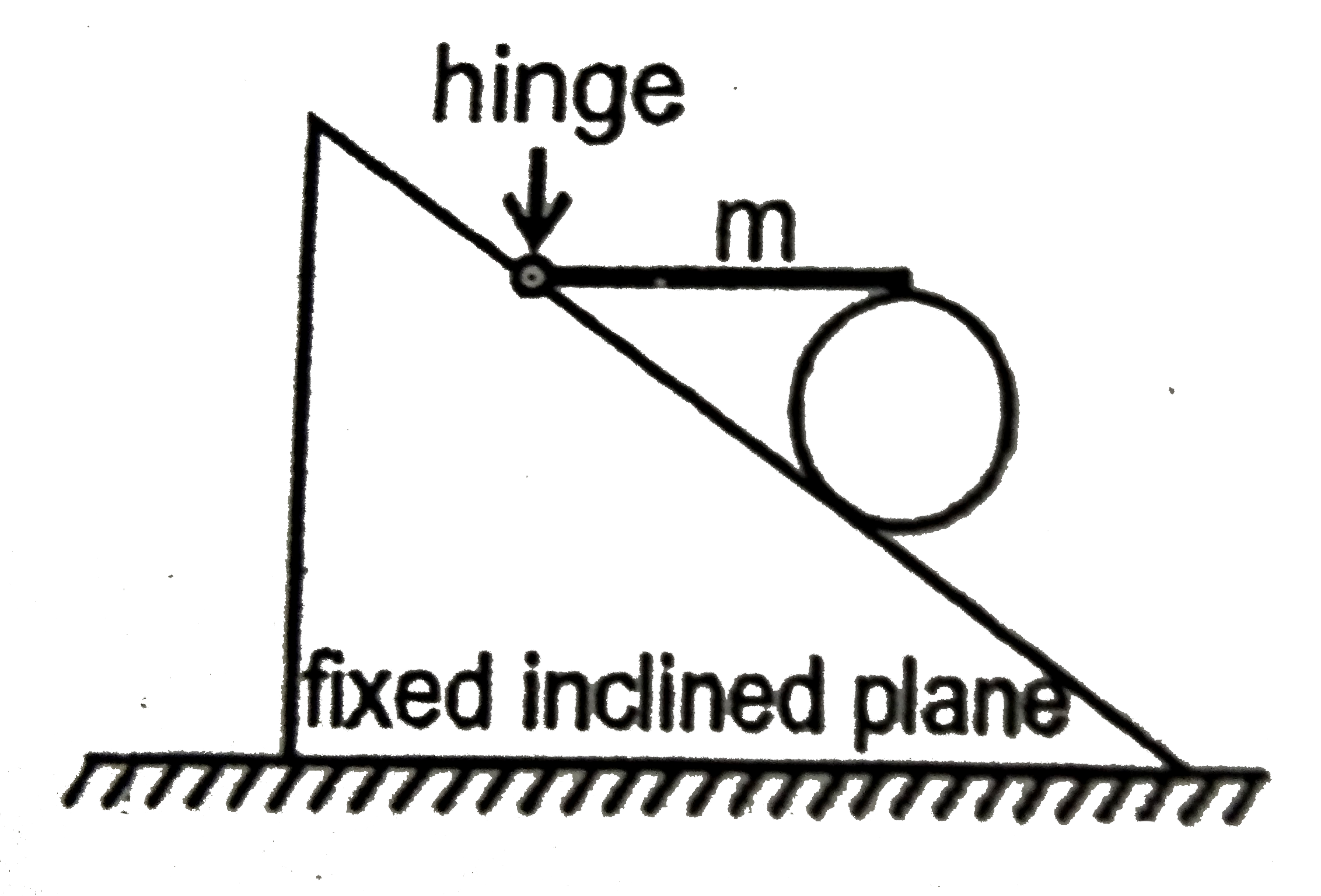
The ratio of magnitude of frictional force on the cylinder due to the rod and the magnitude of frictional force on the cylinder due to the inclined plane is :View Solution

